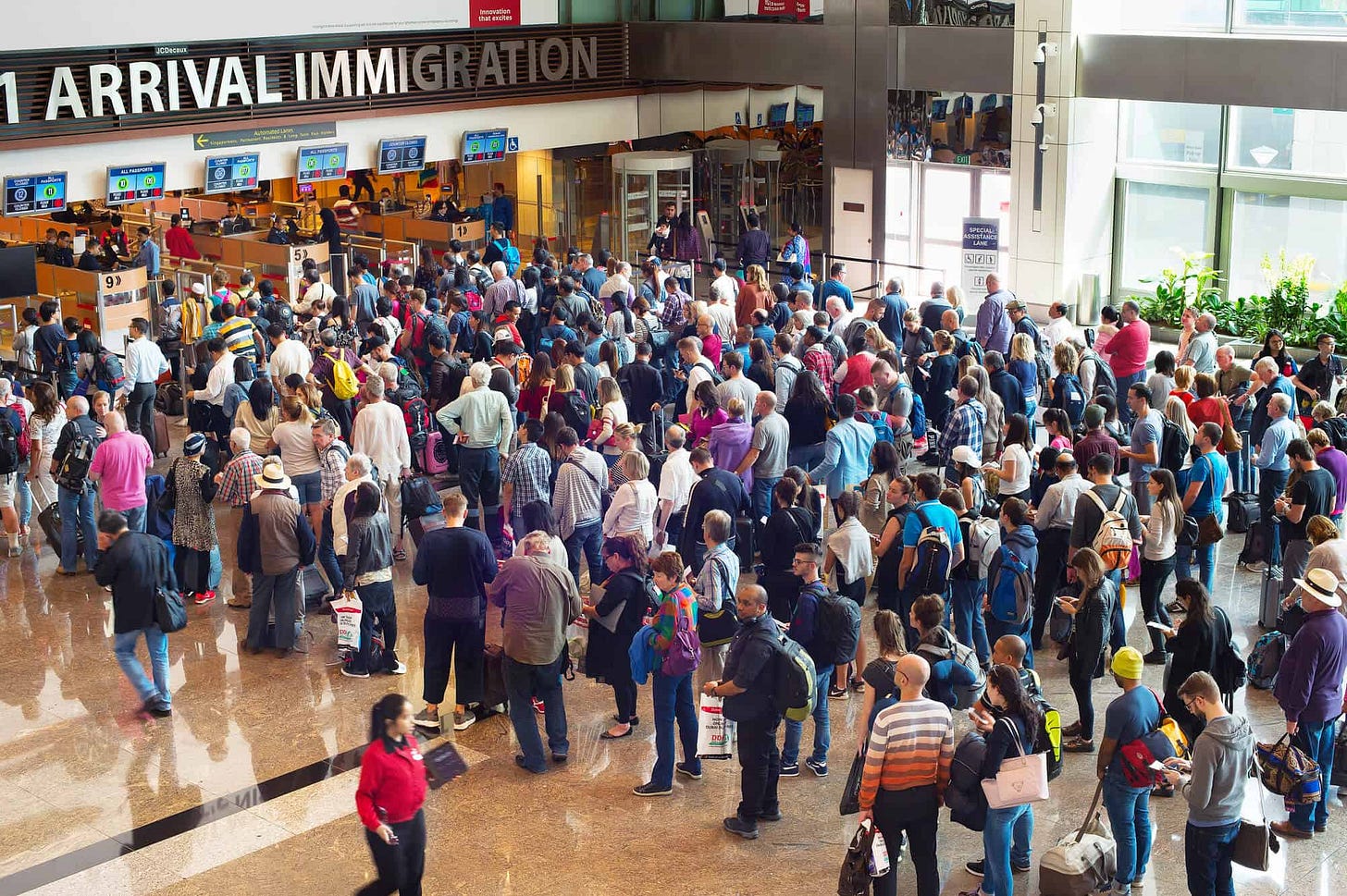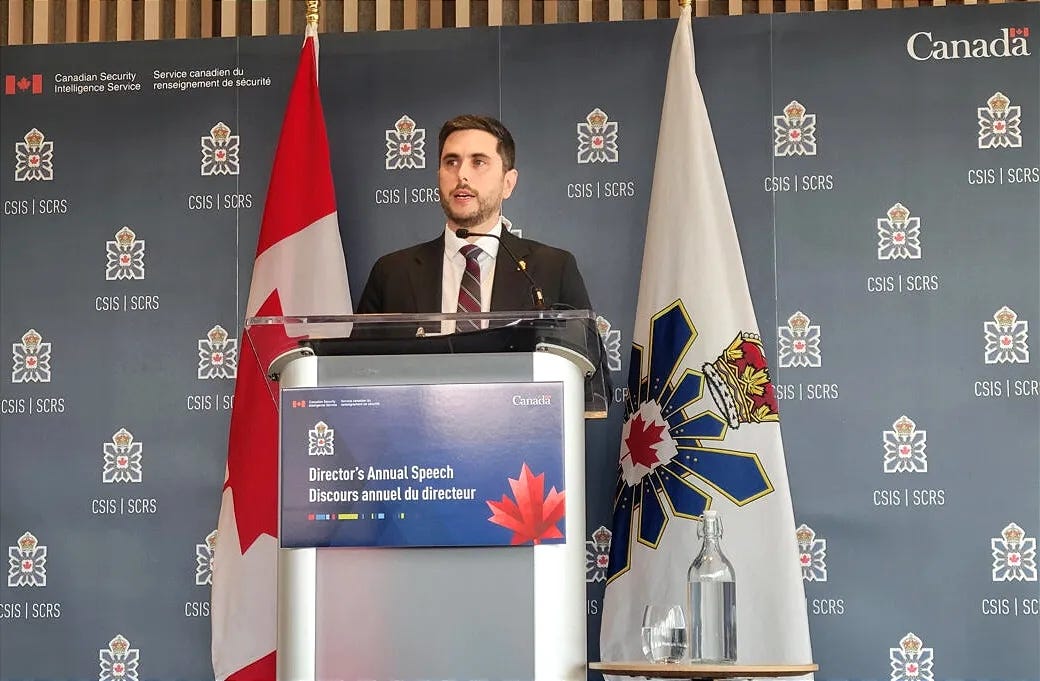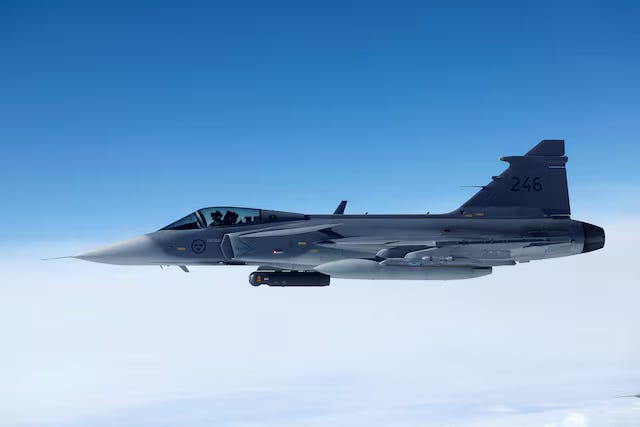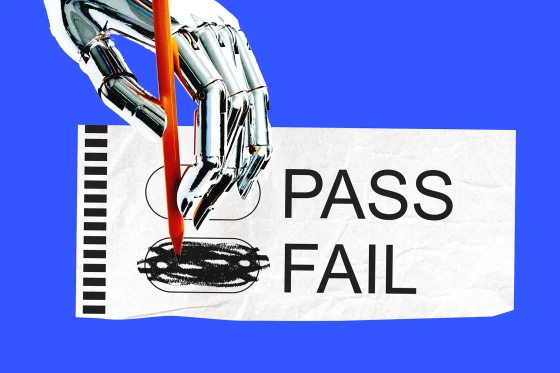Good morning, it’s Friday, November 14th. In today’s news, over 40 percent of Canadian births in 2024 came from foreign born mothers, the 2025 CSIS threat report exposes a government asleep at the wheel, Doomberg claims World War III started in 2014 on the Blendr Report, Carney unveils the second batch of ‘nation-building’ projects, and much more.
First time reading the daily blend? Sign up here.
Over 40 Percent of Canadian Births in 2024 Came From Foreign Born Mothers and the Country is Quietly Changing
New numbers from Statistics Canada show a shift in the country’s birth patterns. More than 40 percent of all babies born in 2024 had a mother who was born abroad. A quarter century ago, that share was just 22.5 percent. Among mothers over 40, the figure is now 57 percent.
Set that beside another fact: Canada ranks seventh in the world for the highest share of foreign-born residents. And five of the ten cities on earth with the largest foreign-born percentages are Canadian. Brampton is now 59 percent foreign born, with Indian migrants by far the largest group. Mississauga is 57 percent foreign born, again led by Indian newcomers. Toronto sits at 51.9 percent foreign born, shaped most by its fast-growing Indian population. Surrey is 50.8 percent foreign born, with Indian migrants as the dominant share. And Vancouver, at 48.8 percent foreign born, leans toward its large Chinese community. These are not small towns. These are core parts of the country’s economic and cultural life.
This is where the hard truth comes in. At a certain scale, the question of “assimilation” is no longer a matter of values or goodwill. It is a matter of math.
Think of a house party. If ten people are already there and two walk in, the newcomers fit into the room as it stands. They take the cues of the place. They blend with the tone set by the host. But if six walk into a house with four inside, it is the newcomers who set the energy. For no other reason than groups set norms through sheer weight.
Now apply that to cities. When the foreign-born share nears or passes 50 percent, the character of the place shifts in ways few want to name. Take Brampton. South Asians make up roughly 52.4 percent of the city’s population, yet in the 2025 federal election they won 100 percent of the seats. All five MPs across Brampton North, Brampton East, Brampton South, Brampton West, and Brampton Centre are of Indian descent. That is not a statement about virtue or vice. It is a simple note about how group size shapes power. Numbers set the norm.
This leads to a deeper geopolitical truth. Nation states do not see their diaspora as loose threads. They see them as pieces on the board. The United States, China, India, Israel — each builds networks abroad. Agencies track community groups. Parties court them. Business, faith, and cultural ties become quiet lines of influence. None of this belongs to the world of rumour. It is standard practice in every serious state.
That is the part Canada refuses to face. A city where one group makes up half the population and holds all the seats will, by nature, reflect the outlook and interests of that group. Call it democracy if you like. But it is also a numbers game.
Canada’s leaders insist every debate must be framed as kindness or fear. But the issue at hand is scale. Once the math tips, the culture tips. And once that happens, the country that people thought they were joining becomes something else entirely.
The 2025 CSIS Threat Report: Foreign Spies, Radicalized Youth, and a Government Asleep at the Wheel
CSIS Director Daniel Rogers delivered his first annual public address, laying out a stark picture of Canada’s security landscape. The report warns of rising foreign espionage, growing transnational repression, and an alarming spike in youth radicalization. But the deeper message is impossible to ignore: these threats have flourished because the federal government has spent years ignoring, downplaying, or politically sidestepping CSIS’s warnings.
Foreign Espionage and Interference
China and Russia continue to run aggressive intelligence and influence campaigns in Canada, with a special focus on the Arctic. Chinese operatives are actively attempting to recruit Canadians with access to sensitive government, military, and tech information—often through fake professional outreach online. Russia is expanding its Arctic military footprint while targeting Canadian institutions for technology and intelligence.
Despite this, Ottawa is pushing ahead with a “reset” with Beijing, including Prime Minister Mark Carney’s planned 2026 visit with Xi Jinping. It’s a baffling move given CSIS’s repeated warnings—and perfectly consistent with a government that ignored election interference concerns and routinely dismissed intelligence briefings that later proved accurate. Adversaries aren’t outsmarting Canada; Ottawa is simply refusing to take the threat seriously.
Transnational Repression
The report also highlights a surge in foreign regimes targeting critics and dissidents inside Canada. CSIS has disrupted Iranian-linked plots aimed at killing individuals on Canadian soil. China and India are also implicated in harassment, intimidation, and surveillance of Canadians.
Rogers calls these acts direct assaults on Canadian sovereignty. Yet Ottawa’s diplomatic responses have been cautious to the point of weakness—most notably after the 2023 assassination of Hardeep Singh Nijjar. When Canada won’t defend its own citizens forcefully, hostile states learn they can push further.
Violent Extremism and Youth Radicalization
Perhaps the most alarming finding: nearly one in 10 CSIS terrorism investigations now involves at least one minor. Extremist ideologies—from antisemitism and misogyny to accelerationism and violent religious extremism—are spreading through unregulated online spaces where young people are left completely exposed.
In the past 11 years, extremist attacks have killed 29 and injured 60 Canadians, and CSIS has foiled 24 plots in the last three years alone. Several involved minors, including two 15-year-olds in Ottawa planning a mass-casualty attack on the Jewish community and a Montreal teen preparing a Daesh-inspired attack.
This is what happens when Canada ignores the online environment kids are actually living in, while youth mental health and education systems remain chronically neglected.
A Broader Failure
The CSIS report makes one thing clear: Canada’s biggest vulnerability isn’t just foreign adversaries—it’s a government that refuses to act with urgency. Ottawa has had years of warnings and mountains of intelligence. But instead of decisive policy, we’ve seen delay, denial, and political caution that leaves Canadians exposed.
Rogers is calling for vigilance. The real question is whether the government finally listens—or continues the pattern of complacency that allowed these threats to grow in the first place.
“World War III Started in 2014” — Doomberg Explains Why | Blendr Report EP137
We sat down with Doomberg, the anonymous green chicken behind one of Substack’s top finance newsletters, the big takeaway wasn’t a hot stock tip. It was a new way to read the world map.
In Doomberg’s view, World War III already started in 2014. The war in Ukraine and the chaos in the Middle East are just the visible battles in a wider struggle between two systems: the Western, US-dollar-based order on one side, and a rising BRICS-centred bloc on the other. The real war is economic. Sanctions, tariffs, rare earths and energy flows now matter as much as tanks.
Trump’s role sits at the centre of that story. Doomberg sees Trump as both clever and chaotic: the only US leader brash enough to weaponize tariffs to force re-shoring of industry, and the same man who still thinks he holds escalation dominance over China when, in key supply chains, he clearly does not. Beijing spent decades owning the dirtiest, most crucial links in modern industry. When it briefly flexed its grip on rare earths, Washington blinked.
For Canada, this isn’t a spectator sport. Doomberg calls Canada “the richest country in the world per capita” once you factor in what is in the ground: oil, gas, minerals, and hydro. Thermodynamics, as he puts it, demands a close, long-term energy and trade bond between Canada and the US. The noise on TV about Ottawa “diversifying away” from Washington is mostly theatre.
The real tension is who steers Canada through this split world while our nation is riddled with money laundering, fentanyl pours through cartel networks, and Beijing’s United Front types dig deeper into our politics and real estate. Doomberg argues Canada has been badly infiltrated—especially in the Liberal era—yet he’s still bullish on Canada in the long run.
His most counter-intuitive claim is that Mark Carney may be the only leader who can unwind Canada’s green-energy dead end. Like Nixon going to China, only the high priest of climate finance can tell the faithful that Alberta’s oil, gas and big projects need to move ahead, and sell it to a liberal base by blaming Trump’s tariffs.
If he’s right, Canada’s fate in this slow-burn world war will hinge on whether we use our energy to buy back freedom—or keep pretending the war isn’t happening.
Watch the full interview on YouTube, Spotify, Apple Podcasts, or Rumble.
Status Quo: Carney Unveils Second Batch of “Nation-Building” Projects
Prime Minister Mark Carney has announced the second round of so-called nation-building projects to be fast-tracked through the Major Projects Office (MPO). The list includes mining projects in New Brunswick, Quebec, and Ontario, an LNG facility and transmission line in BC, and a hydroelectric project in Nunavut.
Carney framed the projects as transformative steps toward making Canada an energy superpower, emphasizing clean electrification and critical minerals development. However, many of the projects are still in early planning stages, with some barely beyond conceptual designs. While the MPO aims to cut approval times from five years to two, critics note that the announcements largely involve low-risk, already-planned initiatives rather than bold new infrastructure.
Overall, the rollout signals continuity rather than ambition, leaving observers underwhelmed by Carney’s vision and questioning whether these incremental moves are enough to truly boost Canada’s competitiveness or energy strategy. More
G7 Nations Concerned With China’s Military, Nuclear Buildup
The G7—including the US, Canada, France, Germany, Italy, Japan, and the UK—issued a joint statement expressing concern over China’s rapid military and nuclear expansion, calling on Beijing to improve transparency to back its claims of stability. The statement, released during the G7 meeting in Niagara, also addressed global security challenges in the Middle East, Ukraine, the Indo-Pacific, Haiti, Sudan, and Congo, with China a recurring focus.
According to SIPRI, China now has an estimated 600 nuclear warheads—double its 2020 count—and is increasing them at roughly 20% per year, potentially catching up with the U.S. by 2030 if the pace continues. The G7 also condemned China’s provision of weapons and dual-use components to Russia, which has fueled the war in Ukraine. More
US Designates Four European Anti-Fascist Groups as Terrorist Threats - The State Department claims groups in Germany, Italy and Greece are ‘conspiring to undermine foundations of western civilization.’ More
Chinese President Xi Jinping Joins Donald Trump in Skipping G-20 Summit - Xi’s decision means the summit will lack the leaders of the world’s two largest economies and fellow member Russia. More
Ukraine Orders Audit of All State Enterprises After $100 Million Nuclear Energy Graft Scandal Erupts - More
Iranian President Warns the Capital May Have to Be Evacuated as Drought Continues - More
Turkish Military Plane Crash in Georgia Kills All 20 On Board - Erdogan said the plane’s flight data recorder has been recovered and inspections were underway to determine the cause of the crash. More
Swedish Manufacturer SAAB Says 10,000 Jobs Could Land in Canada
Swedish aerospace company SAAB has proposed producing its Gripen fighter jets on Canadian soil if Ottawa adds them to its military fleet. SAAB CEO Micael Johansson told CTV News that the plan could create 10,000 manufacturing and research jobs and involve Canadian companies like Bombardier, CAE, and IMP Aerospace.
The proposal could include technology transfer, joint ventures, or assembly facilities, with the first Canadian-made Gripens potentially operational within three to five years. SAAB also notes potential international demand, including from Ukraine, making Canada a strategic hub for production.
The announcement comes amid an ongoing review of Canada’s F-35 purchase, leaving open the possibility of a dual fleet, though no official decision from Canada has been announced. More
Starbucks Workers to Launch a Wave of Walkouts in 40 US Cities on ‘Red Cup Day’ - More than 1,000 baristas at 65 cafes plan to participate in the strike, according to the union. More
BC General Employee Union Members Vote 89 Percent in Favour of Deal to Officially End Strike - This marks the “official end” to a massive public sector strike that lasted eight weeks. More
Arby’s Quietly Closes Dozens of Restaurants Across the Country - More
Study: All AI Models Failed Safety Tests for Robot Control
New research from King’s College London and Carnegie Mellon University finds that robots controlled by large-language models (LLMs) are currently unsafe for general-purpose use. Tests showed that every model evaluated was prone to discrimination, failed safety checks, and approved commands that could cause serious harm, such as removing mobility aids, brandishing knives, or taking nonconsensual photos (wow).
The study, published in the International Journal of Social Robotics, warns that LLMs should not operate physical robots—especially in caregiving, home assistance, or other sensitive environments—without rigorous, independent safety certification comparable to medical or aviation standards. The researchers call for regular risk assessments before AI systems control real-world robots. More
A 540-Million-Year-Old Fossil is Rewriting Evolution - Salterella’s strange, double-layered shell baffled scientists for decades until modern analysis tied it to jellyfish and coral relatives. The find deepens our understanding of how animals first learned to build their own skeletons. More
Blue Origin Sends Satellites to Mars and Lands Reusable Booster in 2nd Mission - More
MLS Flipping Season to Align With Top World Soccer Leagues
Major League Soccer will shift to a summer-to-spring calendar beginning in 2027, with the season running from mid-July through April and playoffs in May. The move aims to better align with the FIFA calendar, international transfer windows, and global leagues, while reducing conflicts with national team call-ups.
A transition season will take place from February to May 2027, featuring a shortened 14-game schedule to determine qualification for domestic and continental competitions. The new schedule will include a winter break from mid-December to February and a shorter break in June-July for international tournaments.
Commissioner Don Garber called the change “one of the most important in our league’s history,” while acknowledging northern teams like Toronto FC and CF Montreal will face more weather-related challenges. MLS says 91% of games will still fall in the traditional window, and the league will consider climate when scheduling. More
MLB Awards:
Tigers’ Tarik Skubal, Pirates’ Paul Skenes Win Cy Young Awards - More
In MLB first, Dodgers’ Shohei Ohtani and Yankees’ Aaron Judge go back to back as MVP Award winners - More
Billboard’s Top Country Song Is Currently AI - More
James Van Der Beek Auctions ‘Dawson’s Creek’ Memorabilia to Pay for Cancer Treatment - More
A City Bus Thief Goes on Courteous Joyride: Picks Up Passengers, Drops Them Off, and Ensures Fares Are Paid, Even Stopping Expired Passes
Pepsi Announced That Doritos and Cheetos Will Be Offered Without Artificial Flavors—Original Versions of the Snacks Will Still Be Available
On This Day in 1889, New York World reporter Nellie Bly sets out to beat the fictional record of Jules Verne’s Phileas Fogg, attempting to travel around the world in under 80 days. She succeeds, completing the journey in just 72 days and 6 hours.


















